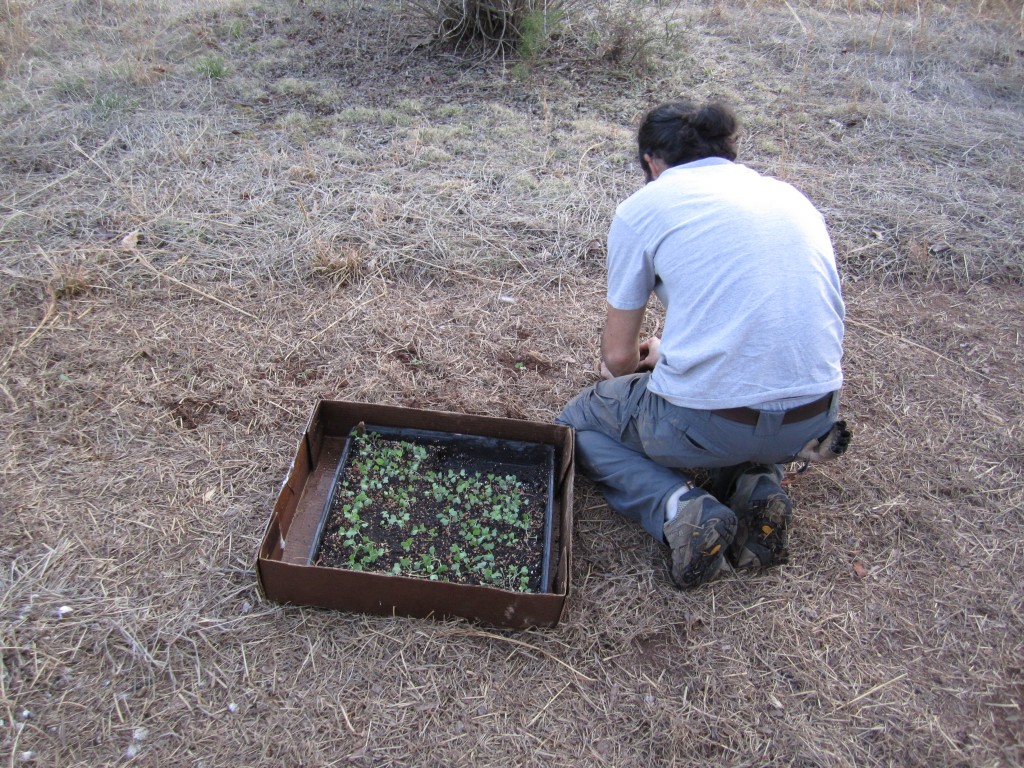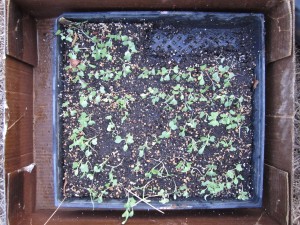We moved our chickens to new paddock this weekend, which is in line with our goal of rotating them every 2 weeks to fresh pasture. Because the early spring growth wasn’t very lush, they scratched it up pretty well and left behind a nice 16 ft. by 32 ft. plot of weeded, tilled, and finely mulched earth that was begging to be planted. Who are we to turn down such an offer?
A few weeks ago I started some broccoli and cabbage seeds in a flat of potting mix. They germinated well and after many nights of ferrying them in and out, protecting them from freezing temperatures and dodger’s butt, a good many have survived and aren’t too spindly. I planted these in long rows, about 12 in. apart in the freshly prepared soil.
Following the chickens with vegetables crops makes good use of the fertility the chickens left behind, both the nitrogen rich manure, and because we feed rock minerals every week, a healthy dose of plant ready minerals ready to rejuvenate the land. The chickens also weed and scratch out most of the grass and weeds that would compete with the crops, and also do a great job of breaking pest cycles that could reduce yields.
It’s also important to fill this new space with something, whether it’s cover crop, trees, grass, mulch or veggies, before some of the nastier weeds come in and take hold. This makes following chicken tractors, or any livestock, with productive species a great multi-functional farm strategy.

transplanting seedlings after running chickens is a quick and easy way to stack functions and obtain a yield
All this should help increase our chances of a nice cabbage crop, and the best part of a nice cabbage crop is sauerkraut. Lacto-fermented sauerkraut actually, but we’ll talk about that later. For now, that’s a quick run down on how our chickens will help us make sauerkraut!
